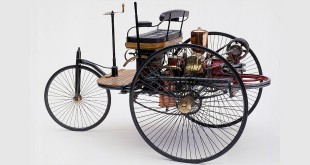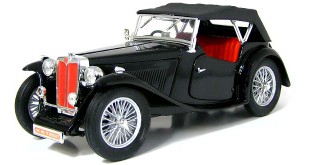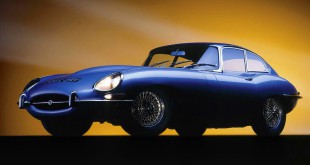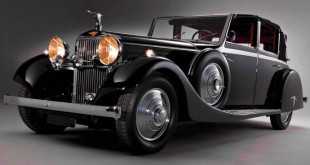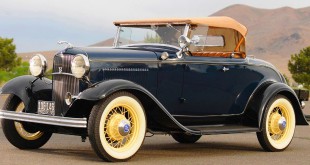Volkswagen — 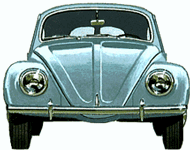 The Volkswagen “Bug” (1949; Germany) was first introduced as a “people’s automobile” in 1937. After World War II the Volkswagen was mass produced as an inexpensive, reliable 4-seater, and became one of the best-selling cars of all time.
The Volkswagen “Bug” (1949; Germany) was first introduced as a “people’s automobile” in 1937. After World War II the Volkswagen was mass produced as an inexpensive, reliable 4-seater, and became one of the best-selling cars of all time.
The Volkswagen Type 1, more commonly known as the Beetle, is an economy car produced by the German automaker Volkswagen from 1938 until 2003. Although the names “Beetle” and “Bug” were quickly adopted by the public, it was not until August of 1967 that VW itself began using the name Beetle in marketing materials. It had previously been known only as either the “Type I” or as the 1200 (twelve-hundred), 1300 (thirteen-hundred) or 1500 (fifteen-hundred), which had been the names under which the vehicle was marketed in Europe prior to 1967; the numbers denoted the vehicle’s engine size in cubic centimeters. In 1998, many years after the original model had been dropped from the lineup in most of the world (it continued in Mexico and a handful of other countries until 2003) VW introduced the “New Beetle” (built on a Volkswagen Golf platform), bearing a cosmetic resemblance to the original.
Although widely disdained for its peculiar styling, weak power, rough ride, and high noise levels, it was ultimately the longest and most produced automobile for a single design. It remained a top seller even as rear-wheel drive conventional subcompacts were refined until ultimately replaced by front-wheel drive models. Most other nameplates are applied to succeeding generations of redesigned platforms, including its replacement, the Golf / Rabbit. The Beetle car was the benchmark for both generations of American compact cars such as the Chevrolet Corvair and subcompact cars such as the Ford Pinto and Chevrolet Vega. In the international poll for the award of the world’s most influential car of the twentieth century the Beetle came fourth after the Ford Model T, the Mini and the Citroën DS.
History
“The People’s Car”
Porsche Typ 12In 1933, Adolf Hitler submitted sketches to Ferdinand Porsche of a proposed “Volks-Wagen” (“People’s Car“), a basic vehicle that should be capable of transporting two adults and three children at a speed of 100 km/h (62 mph). The People’s Car would be made available to citizens of the Third Reich through a savings scheme, which set the price of the car at an impressively low 990 Reichsmark, which was about the price of a small Motorcycle at the time, an average income being around 32RM/week.
Hitler’s commissioning of the “People’s Car” did not necessitate a clean-sheet car design. Ferdinand Porsche had already formulated the original parameters of a car design similar to the final production version of the Beetle several years before it was commissioned, and had already built working prototypes by 1931. Erwin Komenda, Porsche’s chief designer, was responsible for the design and styling of the car. However its production only became financially viable when it was backed by the Third Reich. Before the large-scale production of the “People’s Car” could commence, war broke out, and available manufacturing capacity was shifted to producing military-use vehicles. Production of civilian VW automobiles did not start until after the post-war occupation began.
Kommandeurwagen Initially called the Porsche 60 by Ferdinand Porsche, it was officially named the KdF-Wagen when the project was launched. The name refers to Kraft durch Freude, or “Strength through Joy”, the official leisure organization. It was later known as the Type 1, but became more commonly known as the Beetle after World War II. Prototypes appeared from 1935 onwards; the first prototypes were produced by Daimler-Benz in Stuttgart, Germany. The car already had its distinctive round shape and its air-cooled, rear-mounted engine. However, the factory had only produced a handful of cars by the time war started in 1939. Consequently, the first volume-produced versions of the car’s chassis were military vehicles, the Jeep-like Kübelwagen Typ 82 (approx. 52,000 built) and the amphibious Schwimmwagen Typ 166 (approx. 14,000 built).
The car was designed to be as simple as possible mechanically, so that there was less to go wrong; the aircooled 985 cc 25 hp (19 kW) motors proved especially effective in actions of the German Afrika Korps in Africa’s desert heat. This was due to the built-in oil-cooler and the superior performance of the flat-four engine configuration. The innovative suspension design used compact torsion beams instead of coil or leaf springs. The city of Stadt des KdF-Wagens was created in Lower Saxony in 1938 for the benefit of the workers at the factory. A handful of civilian-specific Beetles were produced, primarily for the Nazi elite, in the years 1940–1945, but production figures were small. In response to gasoline shortages, a few wartime “Holzbrenner” Beetles were fueled by wood pyrolysis gas producers under the hood. In addition to the Kübelwagen, Schwimmwagen, and handful of others, the factory managed another wartime vehicle: the Kommandeurwagen; a Beetle body mounted on the Kübelwagen chassis.
A total of 669 Kommandeurwagens were produced until 1945, when all production was halted due to heavy damage sustained in Allied air raids on the factory. Much of the essential equipment had already been moved to underground bunkers for protection, allowing production to resume quickly once hostilities had ended.
 Kids Portal For Parents India Kids Network
Kids Portal For Parents India Kids Network
